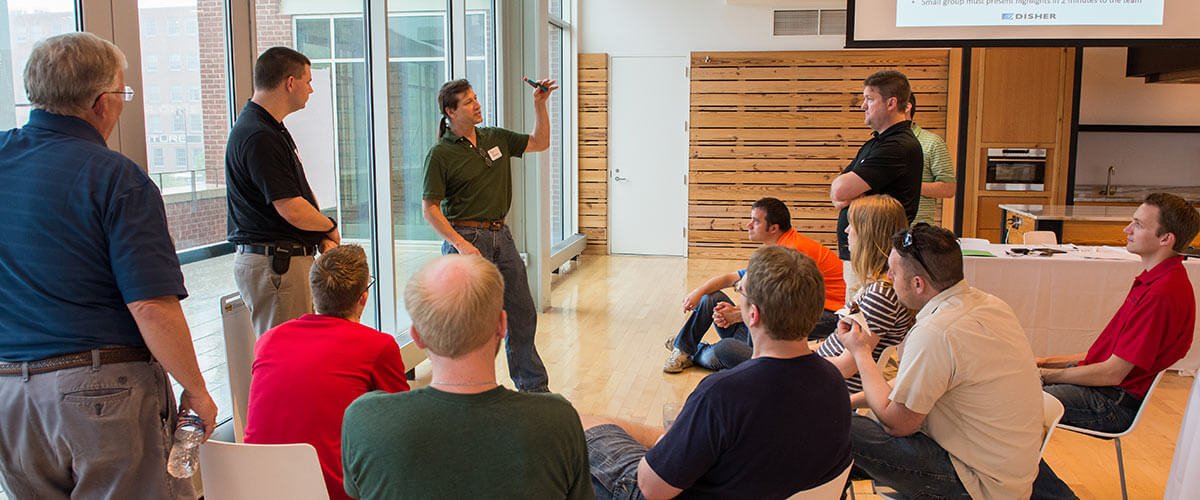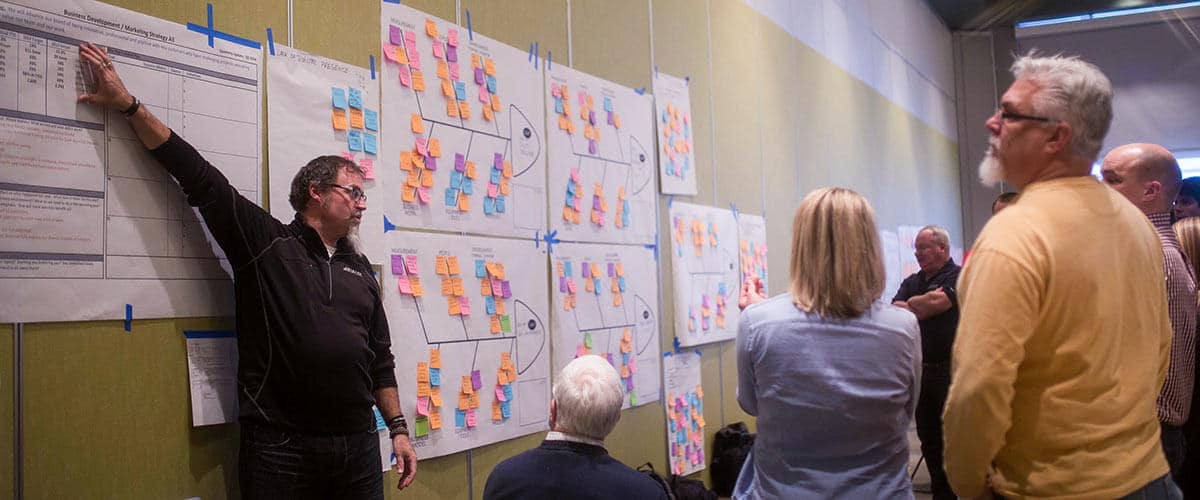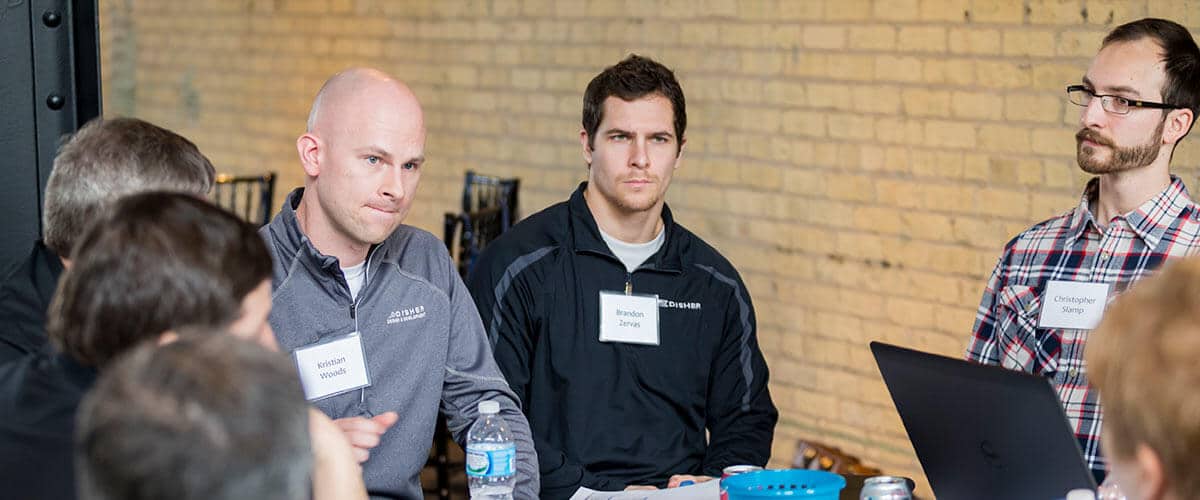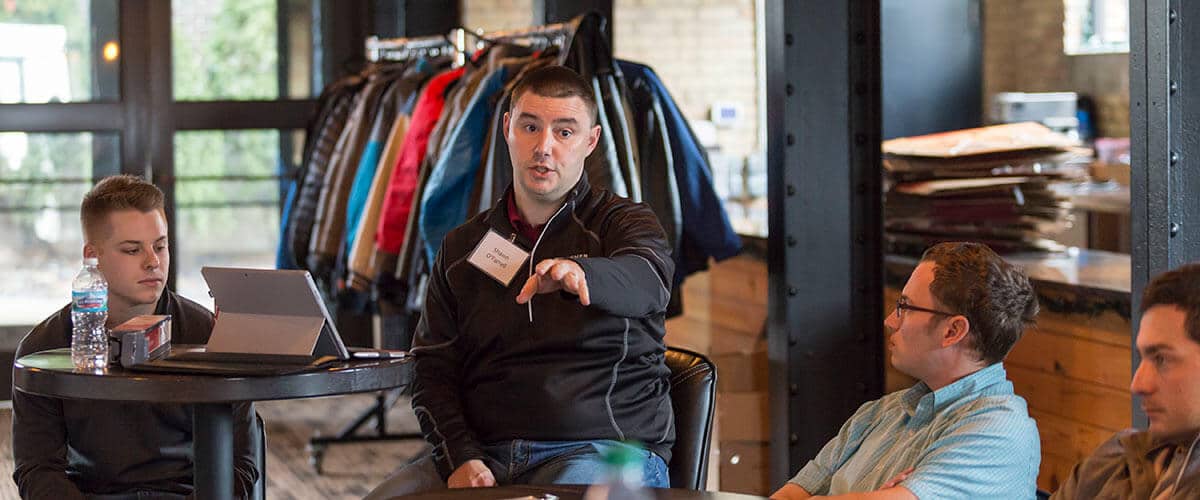
Relating to Product Development & Program Management – how do you make decisions? Do you delegate the task to others, delay it with endless research, or maybe apply a democratic process where everyone gets a chance to vote?
While it’s easy for some and harder for others, each one of us needs to refine this skill because it’s something we do every single day, from simple decisions like what type of screw should be used to more difficult ones like what innovative product should my company pursue next? Successful product development and program management requires wise decision making throughout the entire life of the project. To help you become more effective in the area of decision making, here are five useful tips:

1. Clearly understand the objective.
Many times, the objective of a decision becomes lost in the cause and effect of other decisions. Years ago, I worked on a very exciting project exploring what the automotive interior of the future would be like. We were specifically looking at automotive seating comfort. With passenger vehicles capable of 700+ miles before the required fill-up and leg-stretch, automotive seat comfort was becoming relevant again after years of stagnant innovation. Being in West Michigan, we bench-marked the high-performance task chair market. (Yes, it’s a thing.)
After months of work and lots of coffee, we found ourselves with a concept that showed promise relating to comfort but introduced new challenges regarding safety. We were forced to make a decision. Do we take the quick route and downgrade the complexity of our design to a point where safety was no longer a concern, or do we spend another few months understanding and overcoming the safety challenge? It would have been significantly easier to simplify the design, and we would have ended up with a really cool concept the industry had never seen before. The problem was that the simplification would have sacrificed comfort. Had we not referred back to what got us started on the journey, we would have had a cool product which totally missed the objective. We decided to spin off a new project which included more research, bench-marking, and design iteration to address the potential safety concern while simultaneously increasing comfort.

2. Be sure to involve those impacted by the decision.
On a more recent project I was asked to improve the accessory storage for a portable cleaning device. Working within tight design constraints, my team formulated a series of options and was stuck trying to decide between two specific solutions. We thought it would be useful to approach the end-user to gather feedback on how they stored this accessory on their equipment. Their response was that they stored the accessory on a shelf in the box since they don’t even use it. Wow. We were so focused on making the accessory as accessible as possible only to find out that the person using the machine didn’t even want or plan to use it. We ended up removing the accessory as an option.

3. Know which tools to use when.
There are several tools available to help in decision making. I’m a big fan of decision matrices. My wife and I actually used a validated decision matrix and forced ranking to select the name of our oldest child. When used appropriately, decision matrices help narrow a manageable list of potential choices down to one or two to be pursued further.
What if your list of potential choices is not easily managed? Say for instance you’re solving a system-level problem which has numerous independent variables contributing to poor system performance. That’s where a morphological matrix shines. I recently used a morphological matrix to make a decision regarding optimization of an automated battery maintenance system. The system had five different functions. Each partially contributed to poor reliability. The team brainstormed two to three options for each of the independent functions. We were confident there was a combination which met our needs. However, with over 200 possible combinations, how would we efficiently uncover the optimal solution? I spent the next several days collecting data, analyzing each combination, and tabulating a list of nine dependent variables such as cost, robust to abuse, fault detection, etc. I compiled all the data in an Excel table and held a meeting with the team.
Armed with data, we started talking through the must haves. A program manager started by declaring we can’t spend more than $15 on a solution. I filtered the data to only show combinations with a net cost of less than $15. Instantly we dropped from 256 combinations to less than 100. Next, someone familiar with the service of the equipment stated that we needed to detect three of the four possible faults. I filtered the data to include only combinations which met that criteria. Now we were down to less than 80 combinations. A marketing person chimed in and said the solutions had to be robust to abuse. This brought it down to less than 50 possibilities. The process continued until we were down to three possible solutions. There was a fair amount of work which went into the brainstorming and combination analysis, but in less than an hour the team took a list of 256 solutions down to three. These three potential solutions were run through a decision matrix which provided us with a solid direction for a solution and two contingency solutions.
There are other tools and methods available such as forced ranking vs. rating, statistical risk assessment, and data driven criteria weighting. But I’m not going to get into all of those. The point is that you need to understand the questions you’re trying to answer and be aware of the tools available to help you answer them.

4. Minimize bias.
Whenever decisions are made, there is an opportunity for bias. That’s one of the reasons items #2 and #3 are so critical. By involving the right people and utilizing the right tools, you’ll at least balance some bias. We don’t have a lot of politics within DISHER. We’re very open and honest with unvarnished communication as one of our core culture characteristics. However, I have had the opportunity to support organizations where the boss’s opinion is the correct opinion. It’s not intentional, just the nature of some office climates. Unfortunately, in these cases the decisions of many can be diluted by the opinions of a few. How do we reduce the human tendency to self-promote, follow the crowd, or follow the boss? One way to accomplish this is to reduce the emotion related to making a decision. This is best accomplished using data.
Early in my engineering career I was fortunate enough to work at an organization which relied heavily on data-based decision making. This very successful company nearly required that technical decisions be substantiated with statistically-relevant data. As a young co-op student, I was generally the one collecting the data in a lab. It seemed like monotonous work, but I quickly learned that surprises in the lab are much better than surprises in the field.
Another way to reduce bias is to effectively use the tools discussed in #3. For example, we usually wrap-up our Whiteboard Events by having the collective team vote for their favorite ideas by marking them on a whiteboard with a marker or a sticky note. This is efficient for smaller focused groups, but with large cross-functional teams, politics tend to influence public voting. During a recent two-day innovation workshop with over 20 executive clients, I was tasked with hosting the decision making/evaluation of ideas. To make the process effective and efficient, the owners of each idea pitched their concept to the rest of the team and everyone in the room rated them live via a Google form on their phones. After all the pitches were done, I copied the data to a pre-formatted Excel workbook and we instantly had the unbiased input of 27 executives on 15 innovation ideas based on four criteria. Had we used a more public voting/rating method, it would have taken hours of litigation and likely produced different results.

5. Be prepared to be wrong.
In the words of MythBusters star Adam Savage, “Failure is always an option.” He’s right! When making decisions, we’re often stacking assumptions on top of assumptions sometimes supported by incomplete data. There will be occasions in which our assumptions are flawed or the hole in the data proves to be a critical piece of the puzzle. When this happens, our diligence related to the items above will prove to be invaluable. If we’re prepared to be wrong, clearly documenting our assumptions and data, we can quickly update our decision models and implement contingency plans.
Product and Manufacturing Tech Solutions
If you or your team need help with strategic direction, program leadership, project management, or specialty services, consider partnering with DISHER. Our customers have grown to trust us with their product discovery, engineering, and manufacturing needs. Together, we make great decisions and achieve sustainable results.
Written By: Ryan Noble, Team Lead – Product & Machine Design
Ryan is a seasoned mechanical engineer with substantial experience in machine and product development. He’s a continual learner and teacher/coach, welcoming constructive criticism to satisfy an insatiable desire for excellence.
Written By:

Ryan Noble
Team Lead – Product and Machine Design | CAE
DISHER Newsletter
Sign up to receive articles and insights, delivered monthly.
Schedule a no-committment project call
Reach out to discuss your project to find out if DISHER could be a good fit for you.
